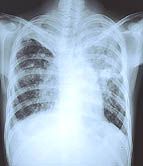Use of Corticosteroids Potentially Linked to Tuberculosis
If the results of a recent study are proven to last, then the previously held belief concerning the relationship between tuberculosis and the use of corticosteroids could be considered incomplete.

If the results of a recent study are proven to last, then the previously held belief concerning the relationship between tuberculosis (TB) and the use of corticosteroids could be considered incomplete.
In the study, Nicholas Vozoris, a respirologist focusing on TB at St. Michael’s Hospital, said current TB screenings may be incomplete for patients taking corticosteroids, as he noted previous studies have shown that people taking corticosteroids who inhaled the bacteria are 8 times more likely to have it become active in their system.
Published in the European Respiratory Journal, the study examined the records of more than 7,300 people in the US National Health and Nutrition Examination Survey. Following the review of the results, the research team determined that although corticosteroid use played a role in having active TB, those who were taking the drugs were screened for the disease less often than others. Patients taking corticosteroids were also found to have been prescribed drugs to help fight TB prophylactically less often.
As part of his summary, Vozoris noted the current standards say that if a patient who does not take corticosteroids produces a bump of at least 10 mm in diameter, it could mean they have inhaled the bacteria. Under current guidelines, bumps need only be 5 mm long if taking a corticosteroid, so Vozoris contented that the cut-off be adjusted to 3.5 mm.